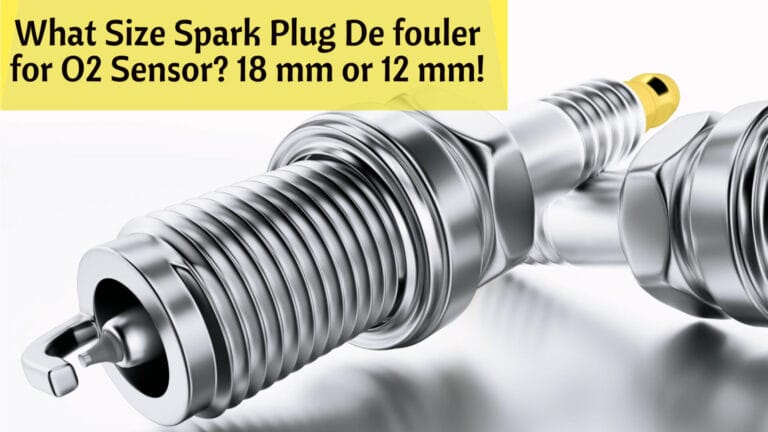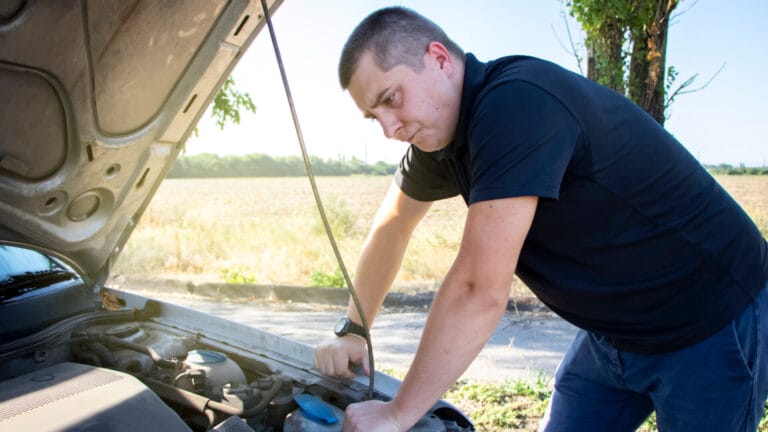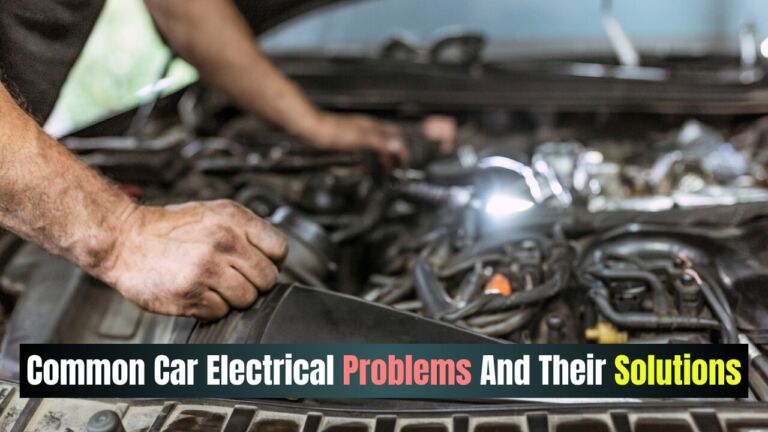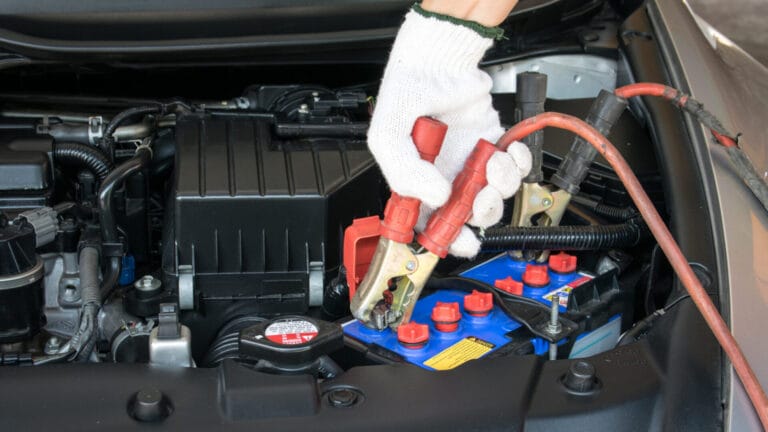Why Is My Negative Battery Cable Smoking? Here’s Why And How To Fix
Seeing smoking coming from the negative battery cable is alarming, indicating a big issue. This is the initial place where you could encounter trouble since it is in charge of grounding a vehicle’s electrical system.
So, why is my negative battery cable smoking?
The most common reason is an electrical fault, such as a short circuit or damaged wiring. Similarly, loose or corroded connections, overloading, overheating, faulty alternators, and a faulty battery can be the reason.
Nevertheless, if this problem is not addressed immediately, it can lead to hazards. This includes fire, electrical shock, or even the entire electrical system shutting down. Well, don’t worry, as we will tell you how to address these issues.
Why Is My Negative Battery Cable Smoking??
The negative battery cable provides a grounding path for the vehicle’s electrical system. It maintains electrical stability within the system and prevents electrical components from getting damaged.
So, if you see smoke coming off from there, you should know that the entire car is in jeopardy and requires immediate action.
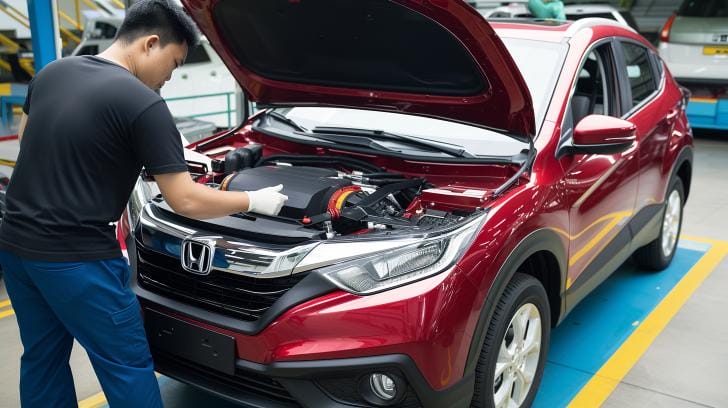
Here are the reasons that can cause smoke in the negative battery cable and their potential fixes.
Note: However, before going through the reasons, you should immediately turn off the engine and remove the battery connections.
Short Circuit
When a short circuit occurs in a vehicle’s electrical system, it can lead to the negative battery cable smoking. This happens due to the excessive current flow caused by the short circuit. As a result, it leads to overheating and potentially damages the battery cable.
However, a short circuit can happen because of any faulty components present in the vehicle, such as relays, switches, or wiring harnesses.
How to Fix
The first step is to identify the location of the short circuit. This may involve inspecting all electrical connections and components to pinpoint the source of the short circuit.
Once the location of the short circuit is located, replace the components that are responsible for it. For example, any damaged or exposed wiring, corroded terminals, malfunctioning relays and switches.
Damaged Wiring
Even though a damaged wire can be the reason for a short circuit, this is completely different. In this case, a short circuit didn’t occur, but it’s the damaged wire that is causing the battery cable to smoke.
Nevertheless, when the wiring is damaged, it can cause an arc of electricity to form between two points. As a result, it can lead to heat buildup and smoke.
How to Fix
The fix for it is quite simple. You just need to check out the wires that are connected to the negative battery cable. However, you can use a hack here where you hold the wires and search for the ones that are heated. Once found, you can replace those wires to get rid of the smoking problem.
Loose Or Corroded Connections
If the negative battery cable is not securely connected to the battery terminal, it can lead to arcing and overheating. As a result, you would come across smoking cables.
Similarly, a corroded connection between the battery and the cable can lead to increased resistance. Thus, this additional resistance causes the cable to get heated and result in smoke.
How to Fix
For a loose connection, ensure the negative battery cable is tightened properly. Take a wrench and tighten the connection between them.
For a corroded connection, use white vinegar or baking soda to clean the corroded spaces. Simply apply vinegar or baking soda to the terminal, and then rub it with a metal wire brush.
Overloading
Adding aftermarket accessories, such as high-powered audio systems or lighting, without upgrading the electrical system can overload the battery cable.
When the electrical system is overloaded, the negative battery cable may start smoking. It’s mostly due to the excessive heat generated by the increased current flow.
How to Fix
The only fix here is to upgrade your electrical system. There is no way your current electrical system can withstand the additional load you put into it through aftermarket accessories. It is only capable of supporting the system that it comes in.
Overheating
Are you driving your vehicle for too long in humid weather? Well, this can cause overheating in the system. Driving your vehicle for too long can cause extra pressure on the electrical system. Additionally, the humid weather substantially contributes to the pressure.
Overall, these factors cause the electrical system to overheat and fail at the end.
How to Fix
There’s no fix for it but to lessen the pressure on your vehicle. Avoid long drives in humid weather and ensure you are giving the system a break every 2 hours at least. This way, you ensure that the electrical system gets the time to get rid of the heat and function properly.
Faulty Alternators
(Source)
An alternator is a crucial component in a vehicle’s electrical system that converts mechanical energy into electrical energy. However, a faulty alternator can cause the battery to overcharge.
Overcharging is extremely harmful to your electrical system since it leads to excessive heat buildup. This heat can cause the negative battery cable to smoke and potentially catch fire.
Fix
The initial step is to replace the faulty alternator with a new one. However, the first thing you should do is ensure that it’s a faulty alternator. You can simply know the alternator is faulty by turning on the engine and looking for unusual noises from the alternator. This includes grinding, whining, or squealing from it.
The alternator in a vehicle is typically located near the front of the engine. So simply take it out and replace it with a new one.
Similarly, you need to check the voltage regulator as well, since it may have been damaged.
The voltage of the voltage regulator should be around 13.5–14.5 volts for a 12V system, depending on the load on the vehicle. If not, then you need to replace it.
Here’s a video that should help with the entire checking process:
Faulty Battery
A faulty battery may have an internal short circuit. It can cause an excessive current flow through the negative cable. As a result, overheating and smoking may be seen because of it.
Similarly, a faulty battery can overcharge itself. As already mentioned, you should know the consequences of an overcharging battery. In short, it will build up heat in the electrical system and the battery itself.
How to Fix
The only fix here is to replace the faulty battery. However, you need to confirm that the battery is faulty first. One of the most significant indicators of a faulty battery is its age. Most car batteries have a lifespan of about 3–5 years. If your battery is older than that, it’s more likely to be faulty and should be checked.
On the other hand, you can use a multimeter to confirm the battery is faulty. Check the voltage of the battery when the engine is off. A fully charged battery should read around 12.6 volts. If the voltage is lower than this, the battery may be faulty.
FAQ
Let’s check out some commonly asked questions regarding this topic.
Are there any symptoms before the negative battery cable starts smoking?
Yes, If the headlights, interior lights, or dashboard lights dim or flicker when the vehicle is running, it could be a sign. Similarly, difficulty starting the vehicle can also be a sign of this.
How can I prevent negative battery cable smoking problems in the future?
One of the most important steps is to conduct regular maintenance and inspection of the battery and its components. Similarly, ensuring that the negative battery cable is properly installed is crucial in preventing smoking problems.
What are the potential dangers associated with a smoking-negative battery cable?
There are endless dangers associated with this problem. This includes battery explosion, fire, electrical shock, and system failure. So it’s best to address this issue immediately.
Closing Words
We hope you got the answer to why my negative battery cable is smoking. The first thing you should do before anything is to turn off the engine and detach the cable to prevent any further damage. After that, you can start to look for the source of it.
It can be any electrical issue, such as a short circuit, damaged wiring, or corroded connection. Similarly, you need to avoid overloading the electrical system as well as overheating.

